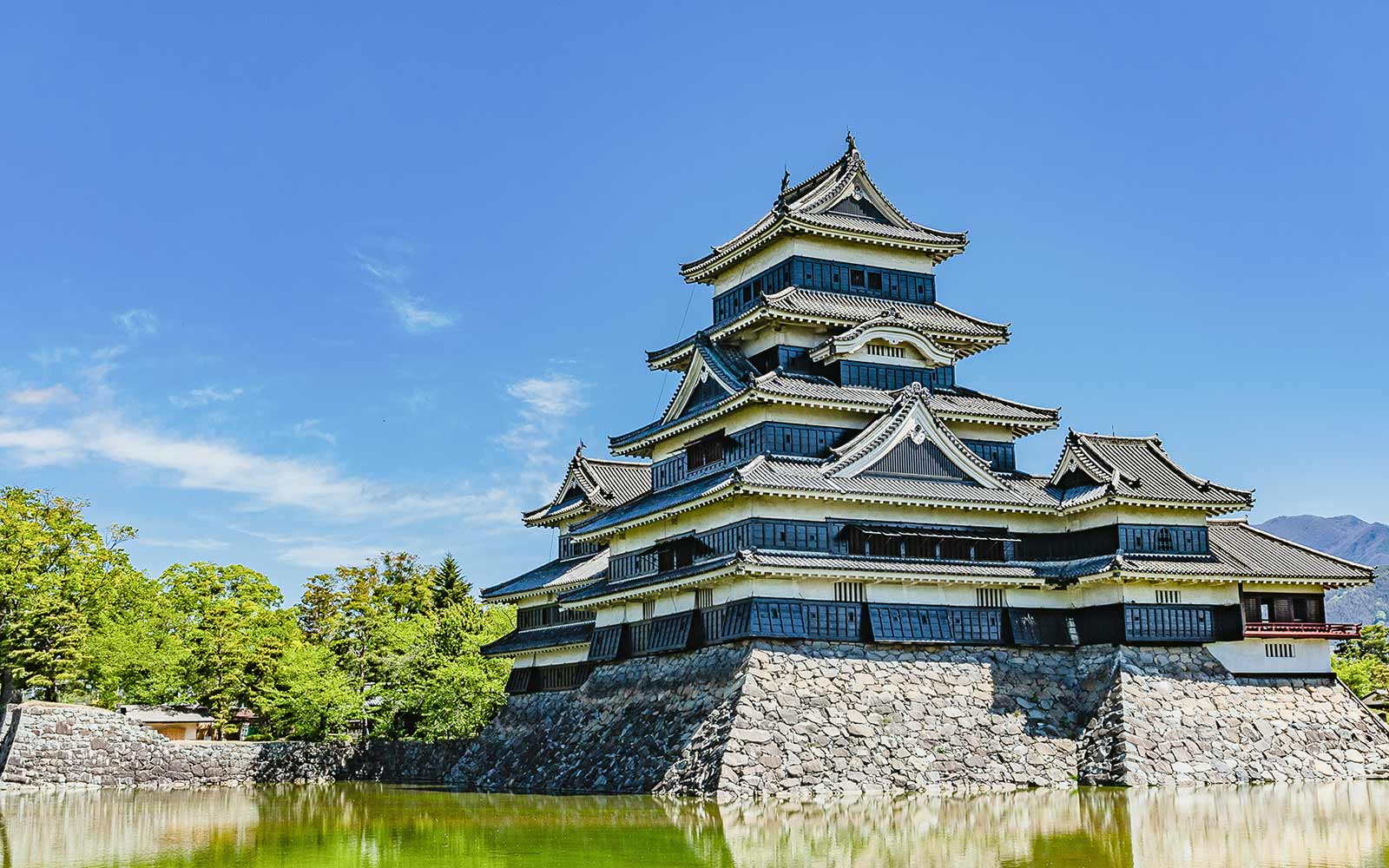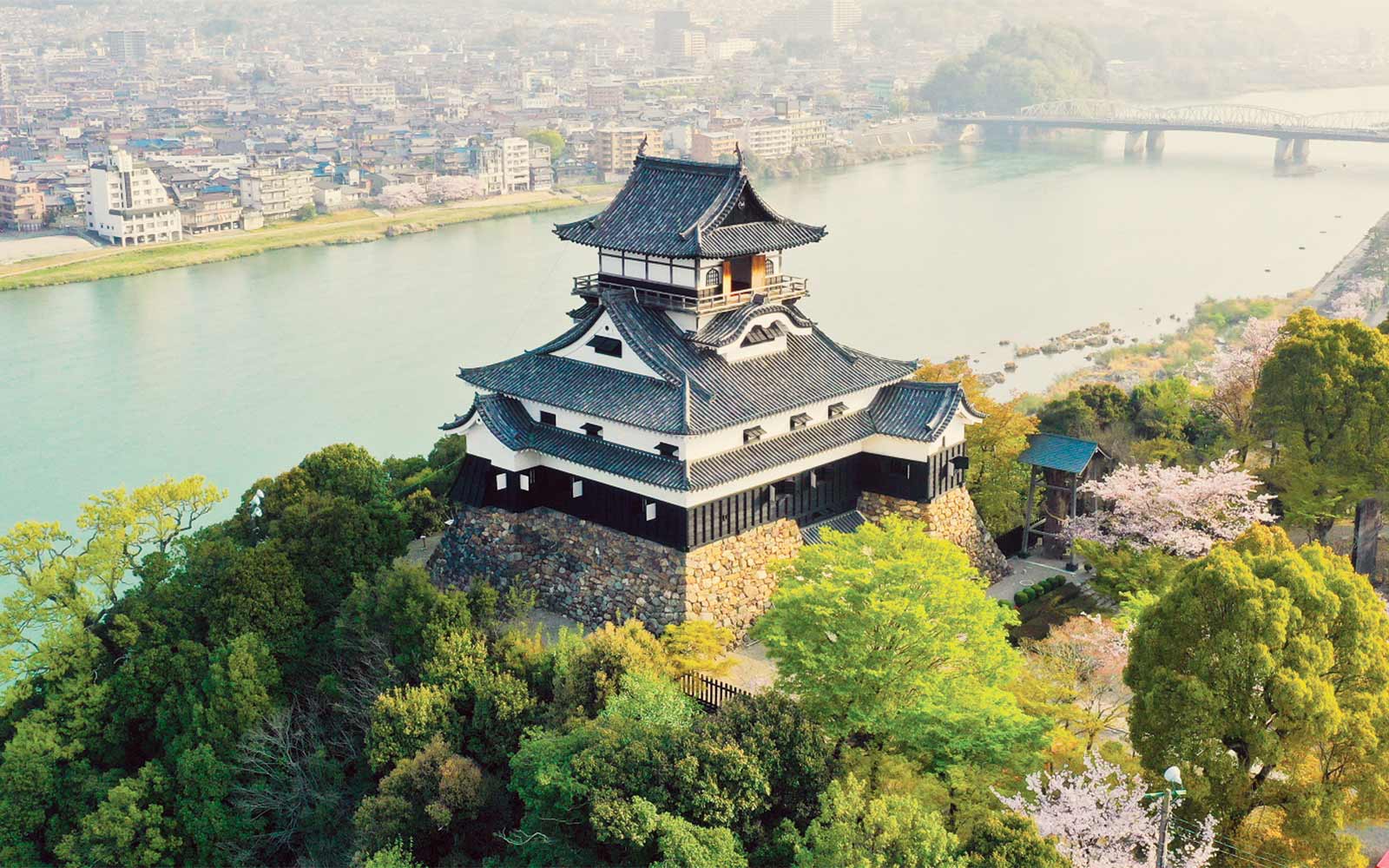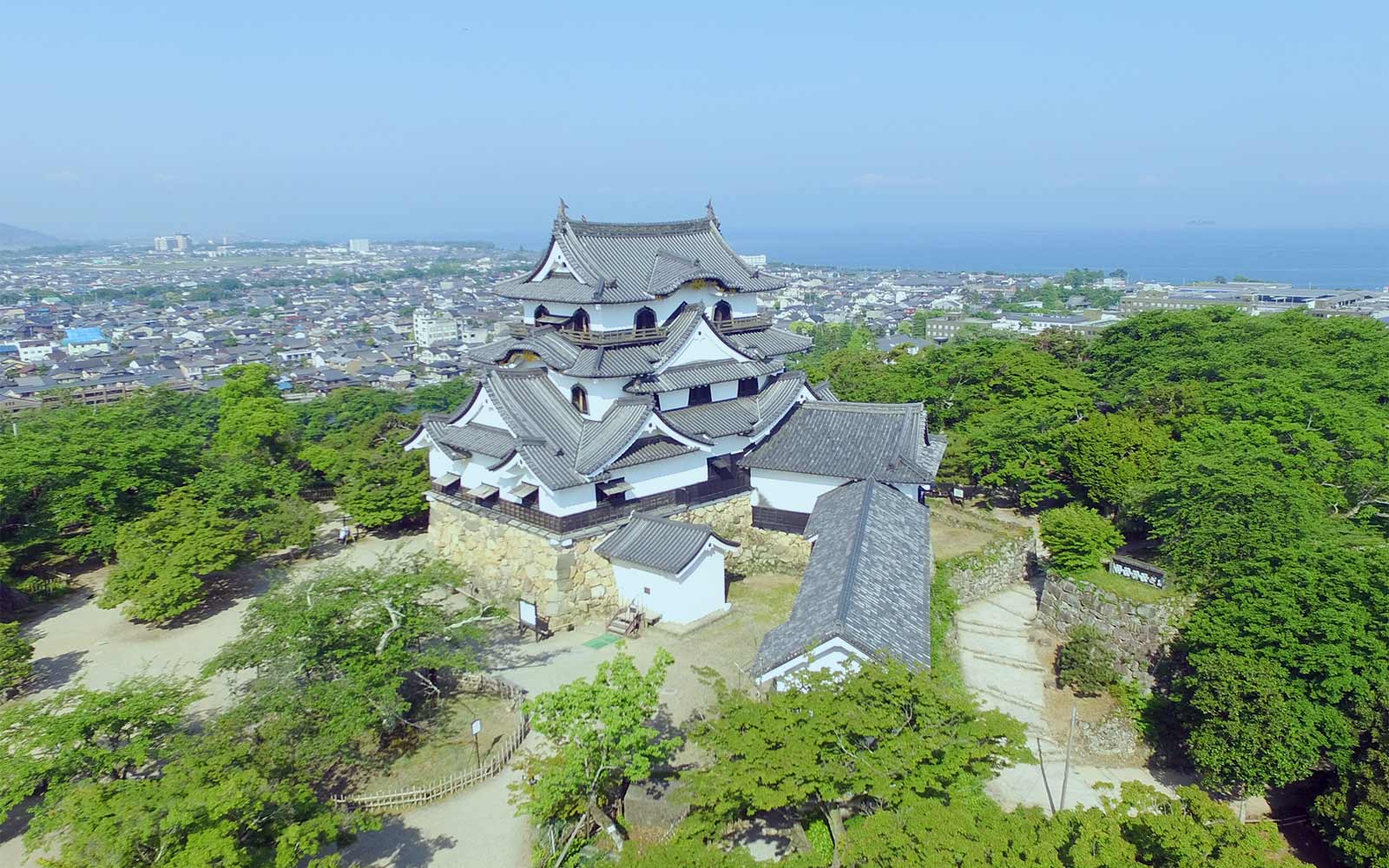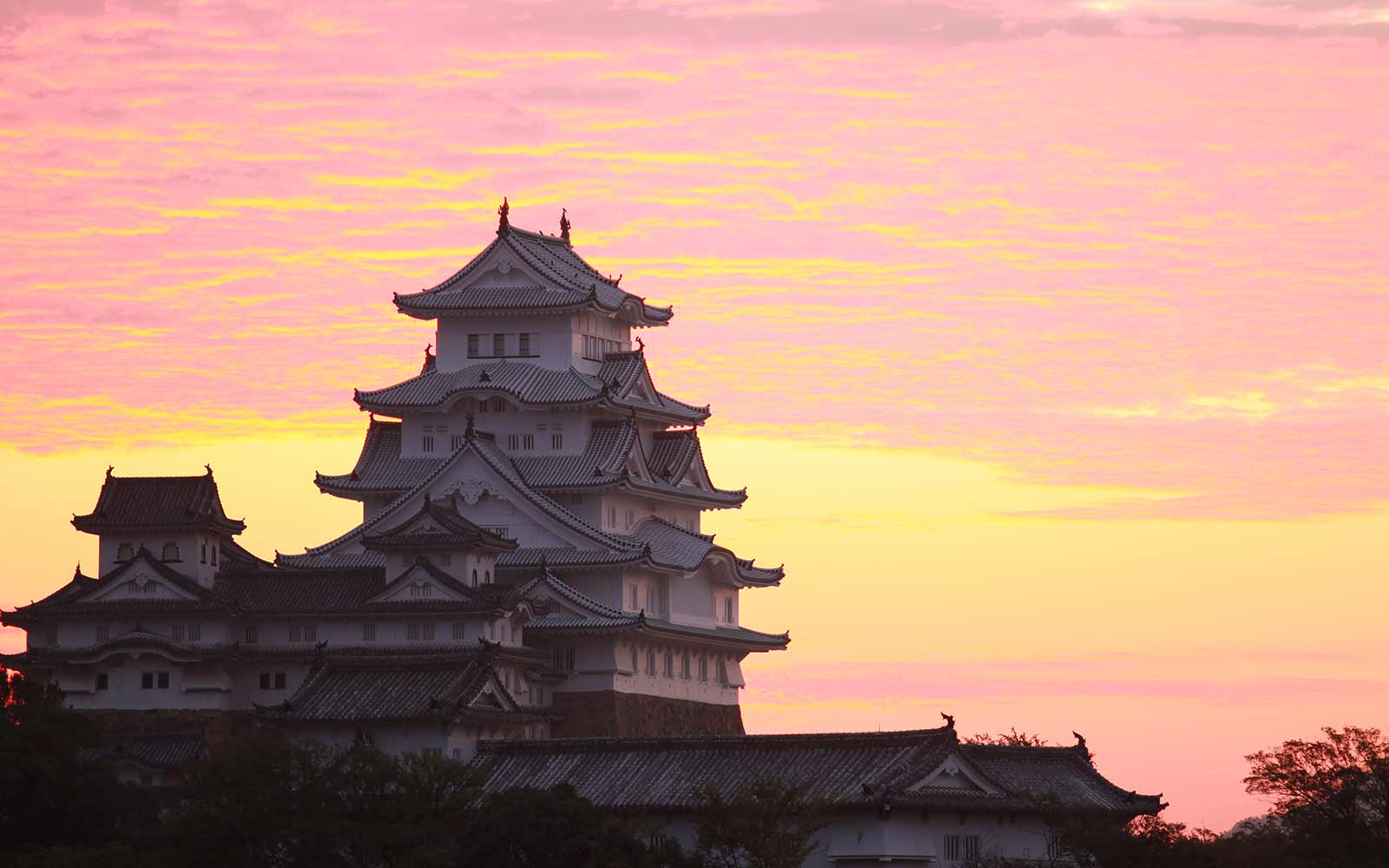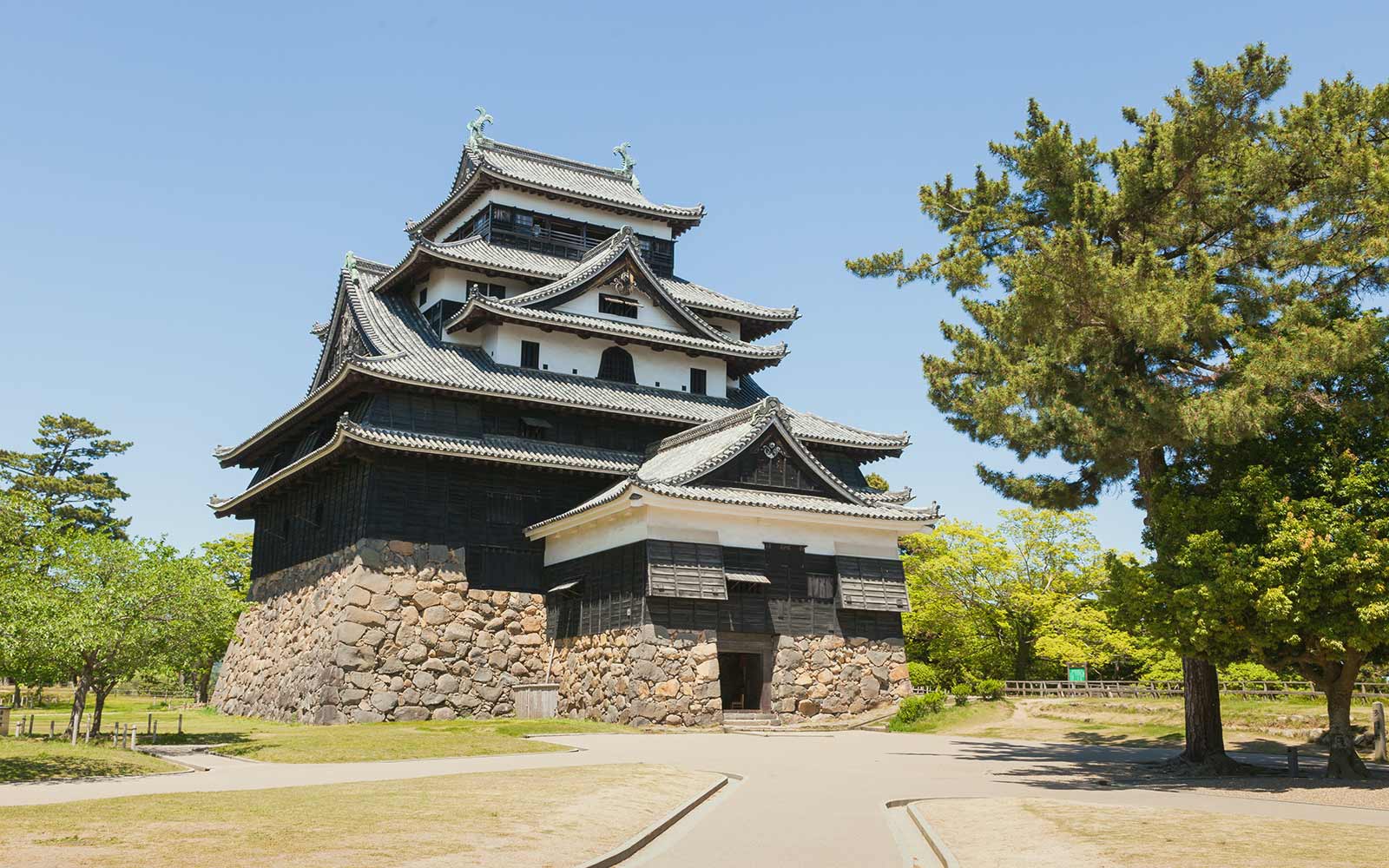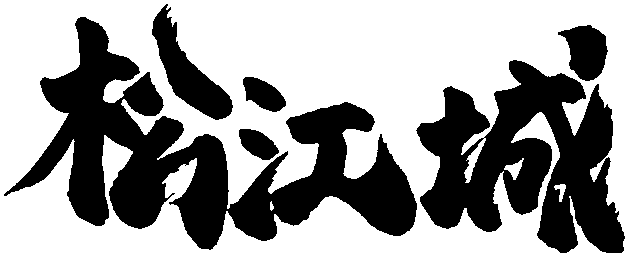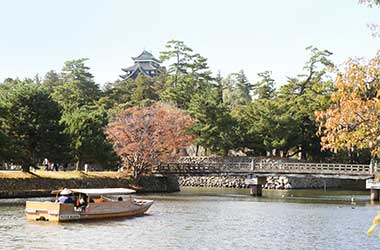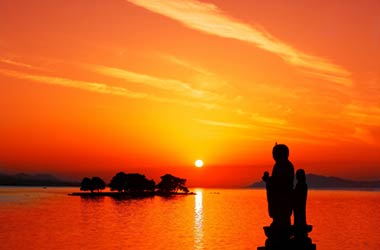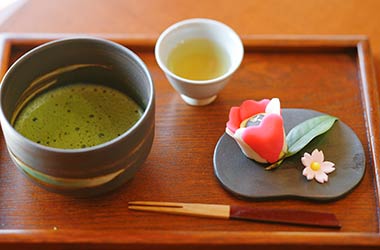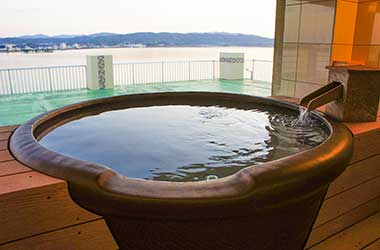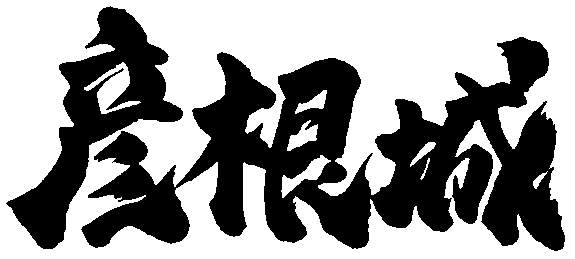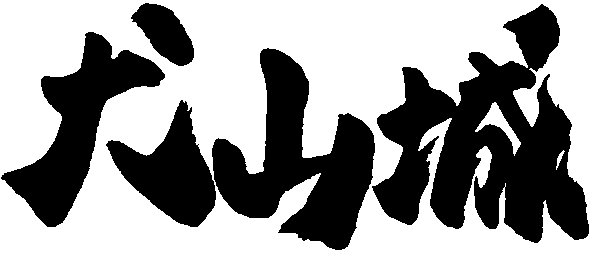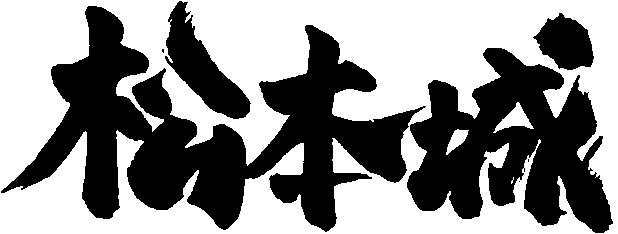

Matsue Castle
Matsue Castle, a national treasure in Shimane Prefecture, is a low-lying castle built on Mt. Kameda near Lake Shinji. The castle keep constructed in 1611 by Horio Yoshiharu was designated as a national treasure in 2015. It is classified as a complex watchtower-style castle keep, featuring a four-tiered exterior, five floors plus a basement, and a turret attached to the front. The exterior walls are mostly black clapboard, and there are defense mechanisms such as loopholes, stone-dropping windows, and stone-throwing platforms all around the castle. The interior was built with actual warfare in mind, with a well and a salt storehouse, for example.
-
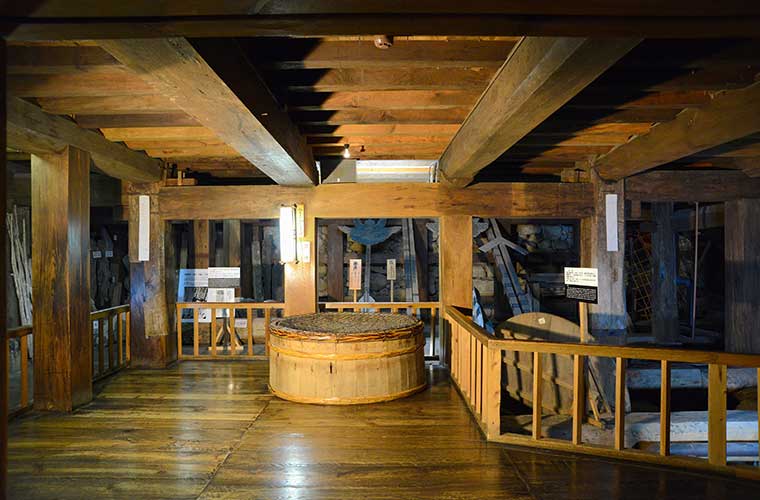
Many facilities enabled shelter during a siege for a month
Matsue Castle has the only remaining castle keep in Japan with a well inside. It is currently half filled, but it used to reach down to a depth of 24 meters. The castle keep also features toilets, which are rare for such structures. After all, it was designed so the castle occupants could take shelter for a month if there was a siege! The castle was truly fortified for defense.
-
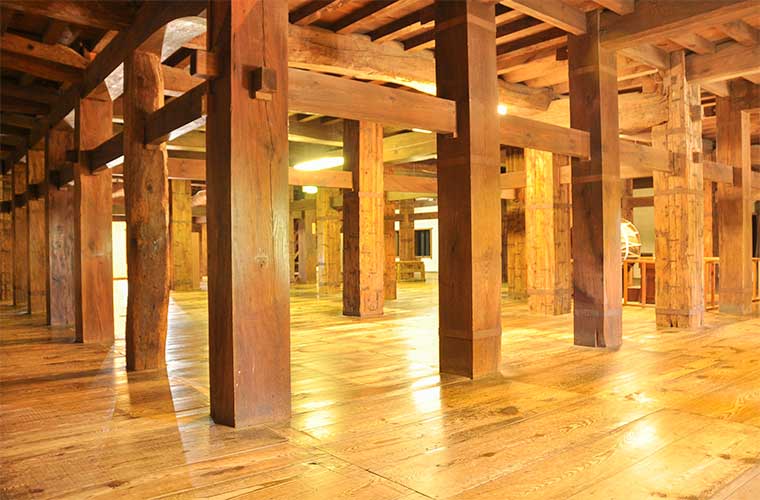
A key feature that earned this castle national treasure status was an ingenious structure to make up for the shortage of timber
One of the reasons Matsue Castle was selected as a national treasure is its distinctive structure. At the time of its construction, there were many castles being built around the country, causing a shortage of wood to make the large central pillars. For that reason, Matsue Castle was built without large central pillars. Of the 308 pillars in the castle keep, 96 are short through-columns spanning two levels. This structure is rare, even in Japan.
-
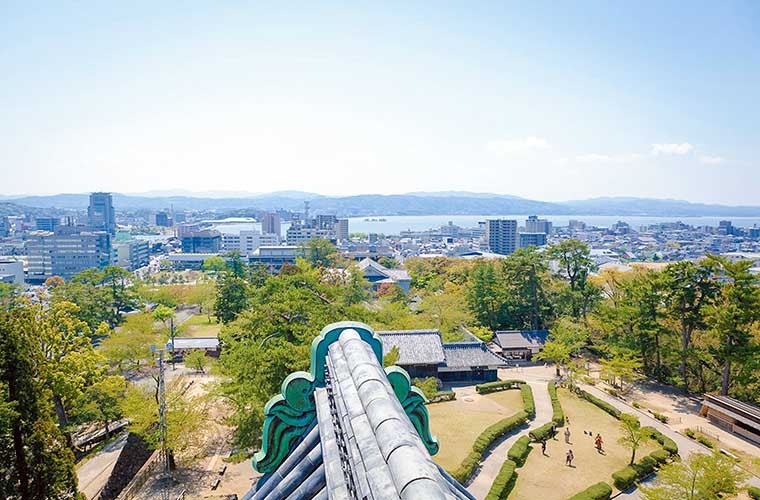
Feel like a lord looking out at the scenery from the top floor of the castle keep!
The top floor of the castle, called Tengu no Ma, has no walls, and since there are no tall buildings around the keep, you can enjoy a 360-degree panoramic view of the castle town. At the time when the castle was in use, that floor acted as a control tower to look out for enemies and prepare for attacks. On sunny days, it offers a sweeping view of the beautiful Shinji Lake. Why not enjoy the experience of a lord, gazing at the same Matsue scenery once admired by the successive lords of the Matsue Domain?


Himeji Castle
Himeji Castle is a national treasure in Hyogo Prefecture. General Kuroda Kanbei, Hashiba Hideyoshi, Ikeda Terumasa, and other famous military commanders have served as lords of the castle. It is the largest remaining castle in Japan. Everything, from the clever demarcation of the territory and the numerous stone walls to the combination of large and small towers, turrets, and gates, encapsulates the charm of Japanese castles. In 1993, Himeji Castle and Horyuji Temple in Nara were designated as Japan’s first World Heritage Sites. In 2015, restoration work spanning five and a half years to preserve the main keep was completed, and a grand opening was held. The connected tower complex, which is a feature of Himeji Castle, and the gorgeous white plaster walls attract many people, and it is often called the ‘White Heron Castle’ for its stunning beauty.
-

Powerful presence of connected tower complex
The towers of Himeji Castle form a connected structure with three small towers and four connecting corridors, arranged as if to protect the main keep in the center. This shape is considered to be relatively strong against attacks and has a powerful presence. You can actually go into the main keep to see its massive size for yourself when you visit.
-

The secrets of its strength as a protective castle hidden in the beauty of the white plaster
The white plaster walls that are visible from far away are almost dazzling. The walls were painted in the Sonurigome technique to completely cover the wood in white plaster to prevent the spread of fires from matchlock guns, commonly used at the time the castle was built. There are mechanisms to prevent a large army from invading hidden all around the castle. When you actually tour the castle, you can see for yourself its practical aspects as a protective castle.
-

Can you figure it out with a close look? Lesser known mystery of the shachihoko
There are 11 shachihoko (mythical tiger-headed fish) decorations around the main keep. Shachihoko are incorporated when building castles as deities to protect them from fire. They come in pairs called A-un (representing the beginning and end of things), with an open-mouthed male A and closed-mouthed female Un. However, All of the shachihoko in Himeji Castle are female. This is because only the female shachihoko remains, and so those females were used as models during restoration work.


Hikone Castle
Hikone Castle is a national treasure in Shiga Prefecture. By order of Tokugawa Ieyasu, the castle was constructed on Mt. Hikone (Mt. Konki) near Lake Biwa. Construction took about two decades, starting from 1604, and it served as the foundation for the Ii clan of Hikone Domain, which produced 350,000 koku (approximately 63 million liters) of rice. The three-story castle keep, which is a national treasure, still stands proudly today in the lush greenery of the castle hilltop, surrounded by a moat. In addition to the castle keep, many cultural assets that show the globally unique political system of the Edo period (1603-1867) remain in Hikone Castle, including the turrets, gates, walls, and stone walls. These elements of the castle scenery are visible from the castle town area and give us a taste of the Edo period.
-

An auspicious castle keep that, even during sieges, did not fall and was relocated here
The keep of Hikone Castle was moved from Otsu Castle, which was located in Otsu, south of Lake Biwa. Legend has it that Tokugawa Ieyasu ordered the keep of Otsu Castle to be relocated to Hikone because it was an auspicious keep that did not fall even when besieged during the Battle of Sekigahara. The structure consists of three floors and three roofs and is characterized by a design that combines large decorative roofs in a complex way.
-

Daimyo gardens also retain the beautiful scenery of the Edo period
Genkyu-en garden, which is located in the northeast part of Hikone Castle, is a garden for daimyo (feudal lords) that retains the beautiful scenery seen in Edo period paintings. There are different shapes of bridges on the island in the pond, allowing you to stroll through the garden and enjoy the scenery. In the Edo period, in addition to providing beautiful scenery, the garden was also a place where daimyo and their retainers practiced tea ceremony and military arts.
-

Can you see the Edo period by looking at Hikone Castle? Valuable cultural asset for learning about politics
Beyond the middle moat of Hikone Castle inwards, numerous facilities remain, including the lord’s villa and Genkyu-en garden, which served as settings for politics, ceremonies, and other matters related to governing the territory. This castle has more such facilities than any other castle in Japan, and they are all still in good condition. You can learn about the political system in the Edo period just by looking at Hikone Castle.

Inuyama Castle
Inuyama Castle, located in Aichi Prefecture, was built in 1537 during the Muromachi Period (1336-1573). It has a national treasure keep that boasts the oldest existing type among castles in Japan. It was built on a small hill near the great Kiso River and is protected by a roughly 50-meter-high steep cliff, earning it the name, Ushirokengo castle (meaning strong from the back). The view from the top floor of the castle keep is superb. In the Edo period, the castle thrived as a key trading point on the Nakasendo and Kiso Kaido roads with the Kiso River flowing directly below. During many wars, the three heroes Oda Nobunaga, Toyotomi Hideyoshi, and Tokugawa Ieyasu fought over this castle. It has survived the rough waves of history, including earthquakes, to remain for us here today.
-

The view from the castle keep is breathtaking, encompassing both natural landscapes and architectural structures!
On the top floor of the watchtower-type keep, there is a corridor that lets you see all around the vicinity. You can enjoy a panoramic view of the Inuyama Castle town and the surrounding area. The view is truly breathtaking! On sunny days, you can see everything from the beautiful Kiso River and Mt. Ontake to Gifu Castle and the Nagoya station building.
-

Historical wooden architecture Feel history with all five senses
Inuyama Castle still retains many of the original wooden structures from when it was built. Feel the warmth of the historical old wood that justifies its status as a national treasure. When you walk through Inuyama Castle, you can experience and enjoy its history with all your senses, for example, through the sound of the creaking floors and the gaps that have developed over time.
-

Protected Inuyama Castle from typhoons? Sacred large cedar tree
On the east side of the castle keep, there is a cedar tree enclosed in scaffolding. This tree, which was slightly taller than Inuyama Castle, was struck by lightning during the Ise Bay Typhoon in 1959. After that, the local people adorned it with sacred straw ropes and worshiped it, saying that it protected Inuyama Castle.


Matsumoto Castle
Matsumoto Castle, a national treasure in Nagano Prefecture, is Japan’s oldest surviving castle with a five-tiered, six-floor main keep. The keep is said to have been built from 1593 to 1594. The walls are covered in clapboard that is white plaster on top and painted in black lacquer on the bottom, creating a stunning black and white contrast. The castle keep was completed at the end of the Warring States period (15th to 16th centuries). During the calm Kan’ei era that followed (1624 to 1644), tsukimi-yagura (moon-viewing turrets) were added to the structure. Matsumoto Castle is the only castle in Japan that combines a keep with tsukimi-yagura, showing how the meaning of the castle keep has changed over the years.
-

Collaboration between the Northern Alps and Matsumoto Castle creates a stunning beauty
One point of appeal of Matsumoto Castle is its beautiful scenery. The dignified appearance of the castle keep, with its contrasting white plaster and black lacquer, is impressive. However, even more striking is the view of the castle against the backdrop of the Northern Alps, a sight unique to Matsumoto Castle. When you visit, notice its overwhelming size.
-

The mystical night view of Matsumoto Castle, seemingly floating on water, is also a must-see!
Each year from December to February, a laser mapping display illuminates Matsumoto Castle every night from 6 to 9 PM. The beautifully illuminated Matsumoto Castle, complete with enchanting lights and sounds, is stunning as it appears to float atop the moat. Discover the new charm of Matsumoto Castle in this mystical sight that offers a different experience from the usual.
-

Take note of the spring water that supports the moat and residents’ lives
There is plenty of spring water around Matsumoto Castle, and the Matsumoto Castle Town Springs have been selected as one of the best 100 waters in Japan. The water in the moat around Matsumoto Castle is also spring water. The waterways that run through the city have played an important role in providing water for daily life and fire protection since the Edo period, and they continue to enrich the lives of residents even today.
